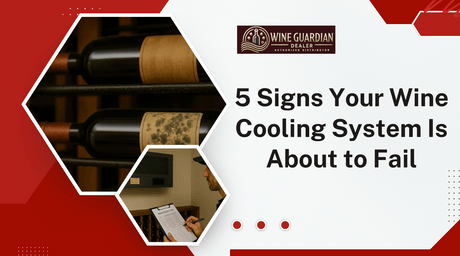
5 Signs Your Wine Cooling System Is About to Fail
Don’t wait for a costly surprise. Wine Guardian Dealer breaks down the top 5 signs your wine cooling system may be failing — and how to fix it before damage...
Jim Hopper
In Stock & Ready to Ship – Order Your Wine Cooling System Today!
Free Wine Cellar Expert Consultation | 📞 Call 1-800-260-1712
Start with a free expert consult—cooling system sizing, racking options, and no upsells.
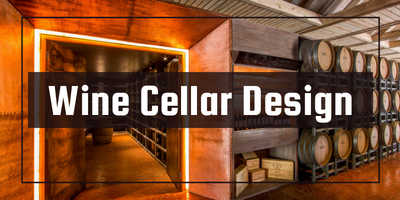
Build your dream wine cellar—without costly mistakes or guesswork.
By Jim Hopper, Wine Cooling Expert
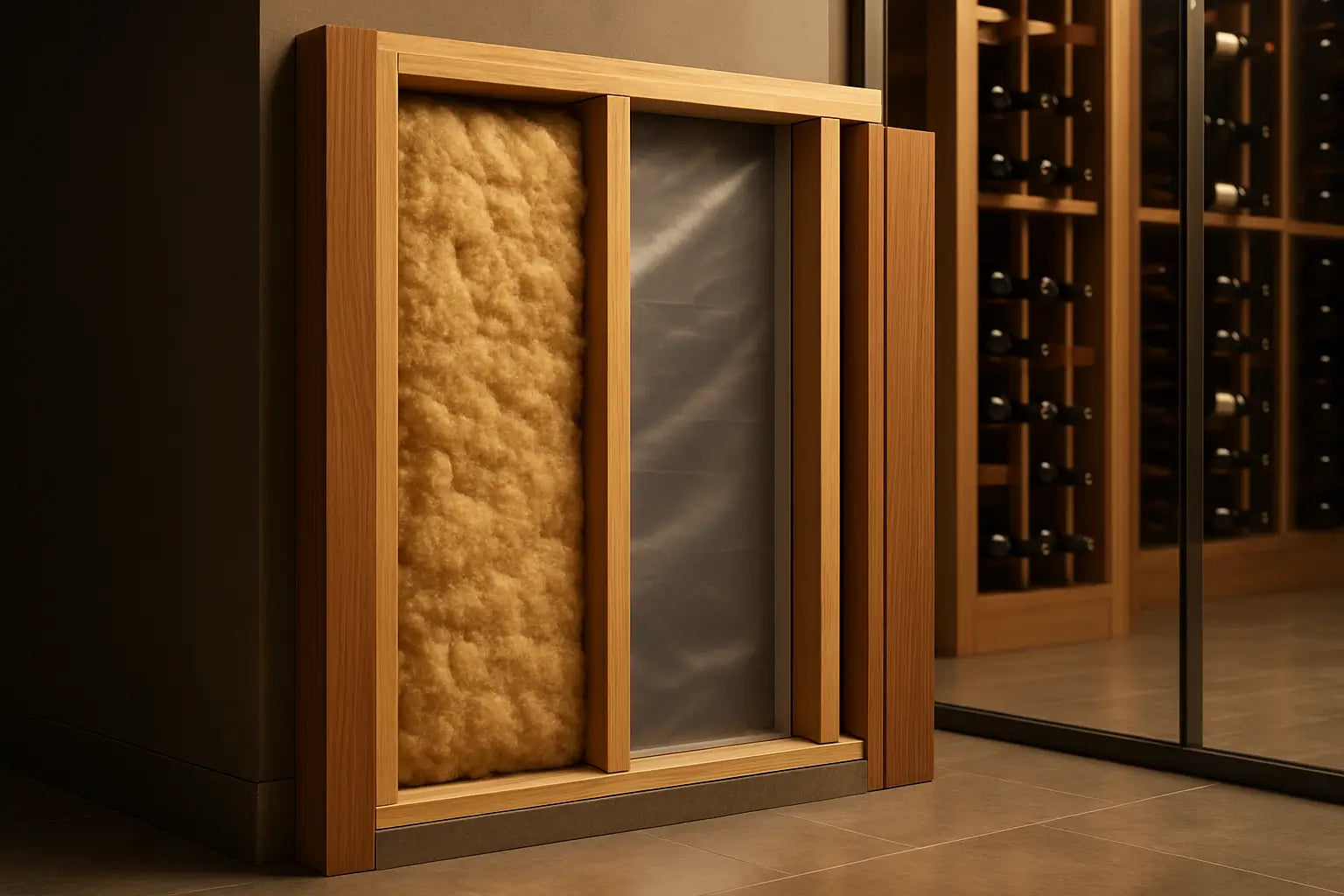
When building a wine cellar, one critical element is often misunderstood or skipped entirely: the vapor barrier.
A vapor barrier is a sheet of plastic or foil that blocks moisture from migrating through walls and ceilings into your climate-controlled space. Without it, warm humid air can seep in — leading to condensation, mold, and cooling system strain.
If you’re new to wine cellar construction, start with our Wine Cooling Systems Overview to understand how vapor and temperature work together.
Some materials are marketed as "vapor retarders," but they only slow moisture — they are not substitutes for properly sealed vapor barriers.
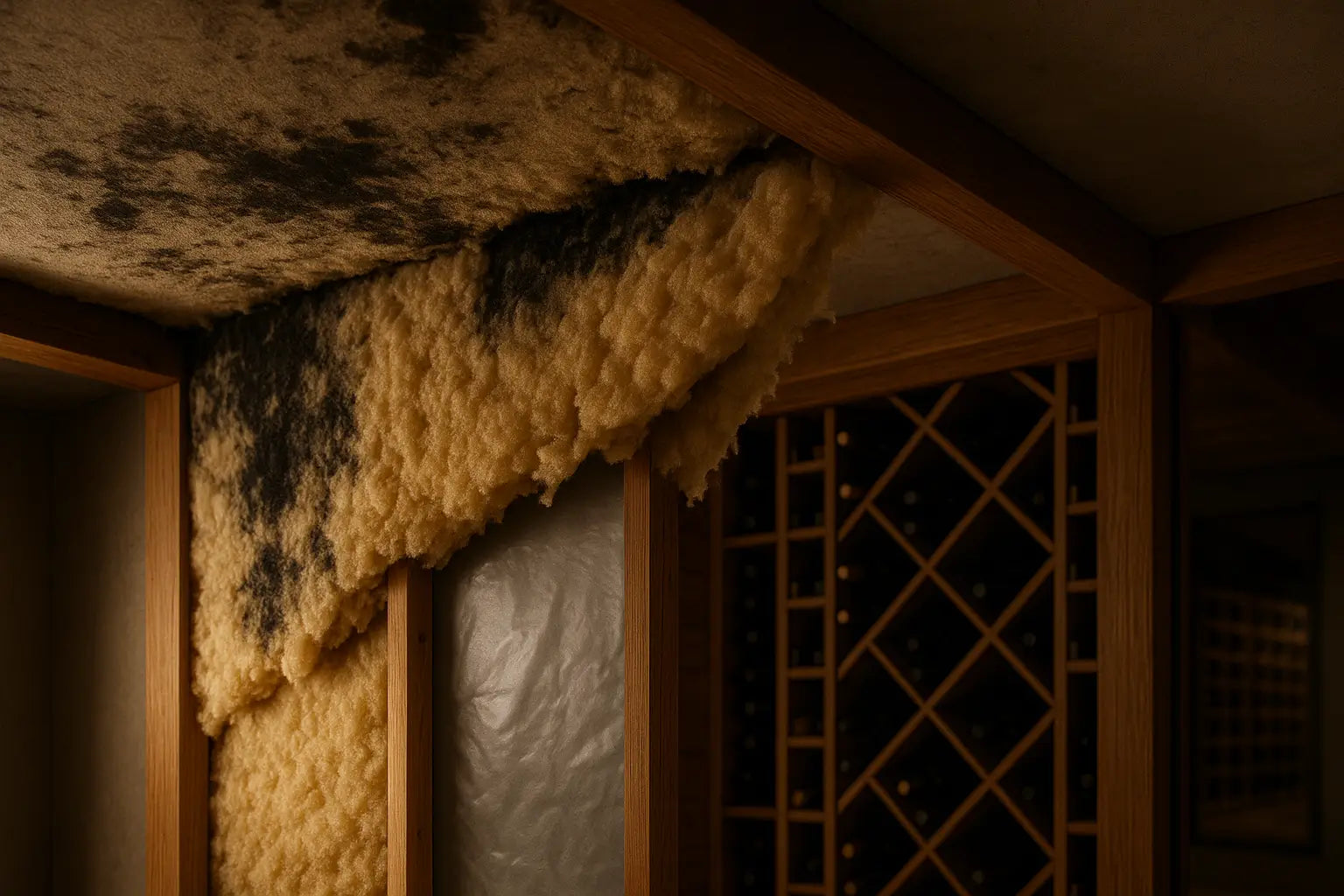
This process is known as vapor drive — and it’s exactly why vapor barriers are non-negotiable.
According to the Building Science Corporation, improper vapor control is one of the top reasons why home wine cellars fail over time.
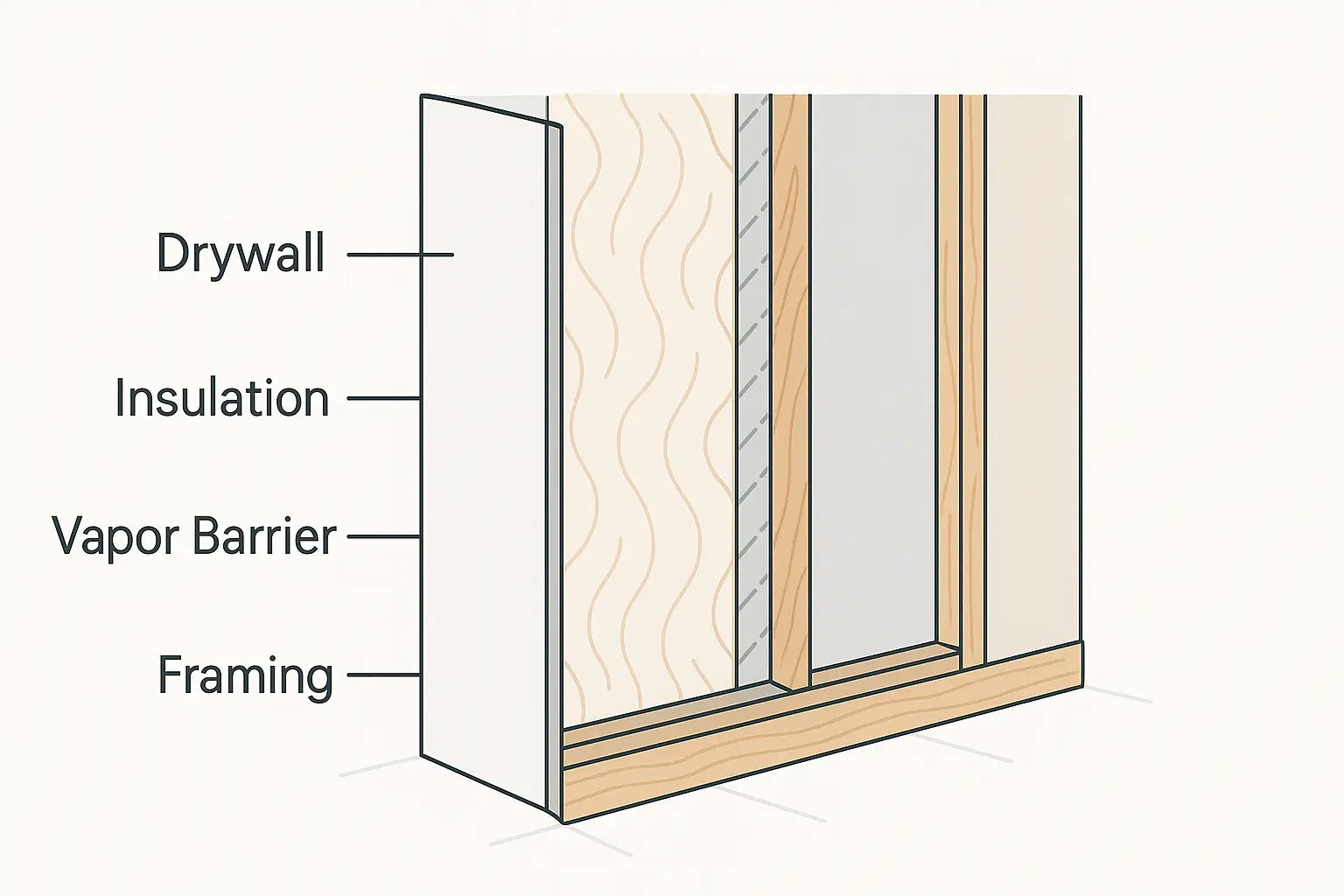
In a properly built wine cellar, the vapor barrier should always go on the warm side of the wall — between the framing and insulation. That means:
The biggest mistake? Putting the vapor barrier inside the cellar wall — trapping moisture inside the insulation. That’s a guaranteed recipe for mold.
➡️ Learn more in: Cooling Glass-Walled Wine Cellars
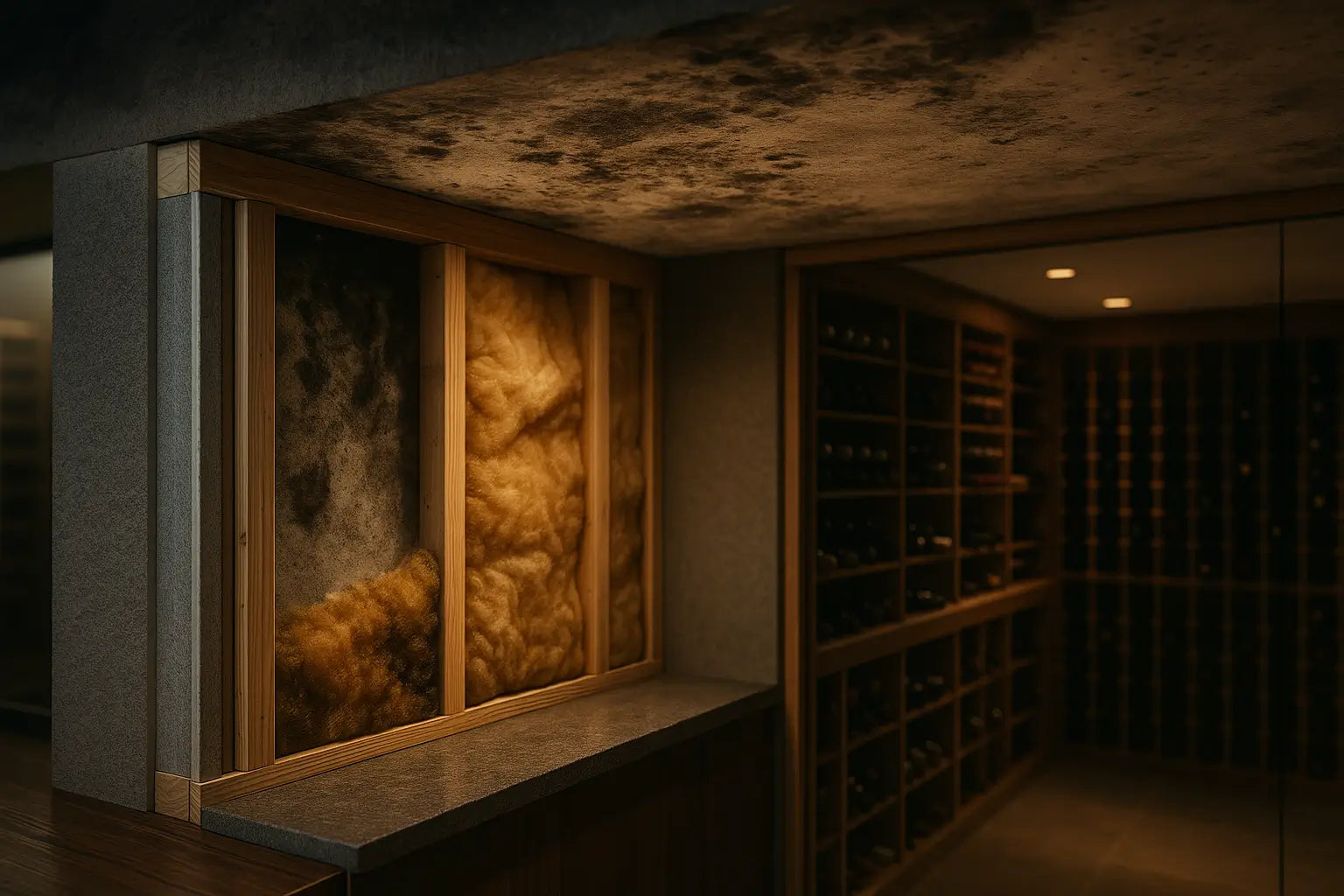
👉 Real Example: A homeowner in Florida built a 1,200 cu ft wine room without installing a vapor barrier behind the insulation. Within 9 months:
The solution? Tearing down the entire cellar interior, drying it out, and rebuilding with proper vapor sealing.
📸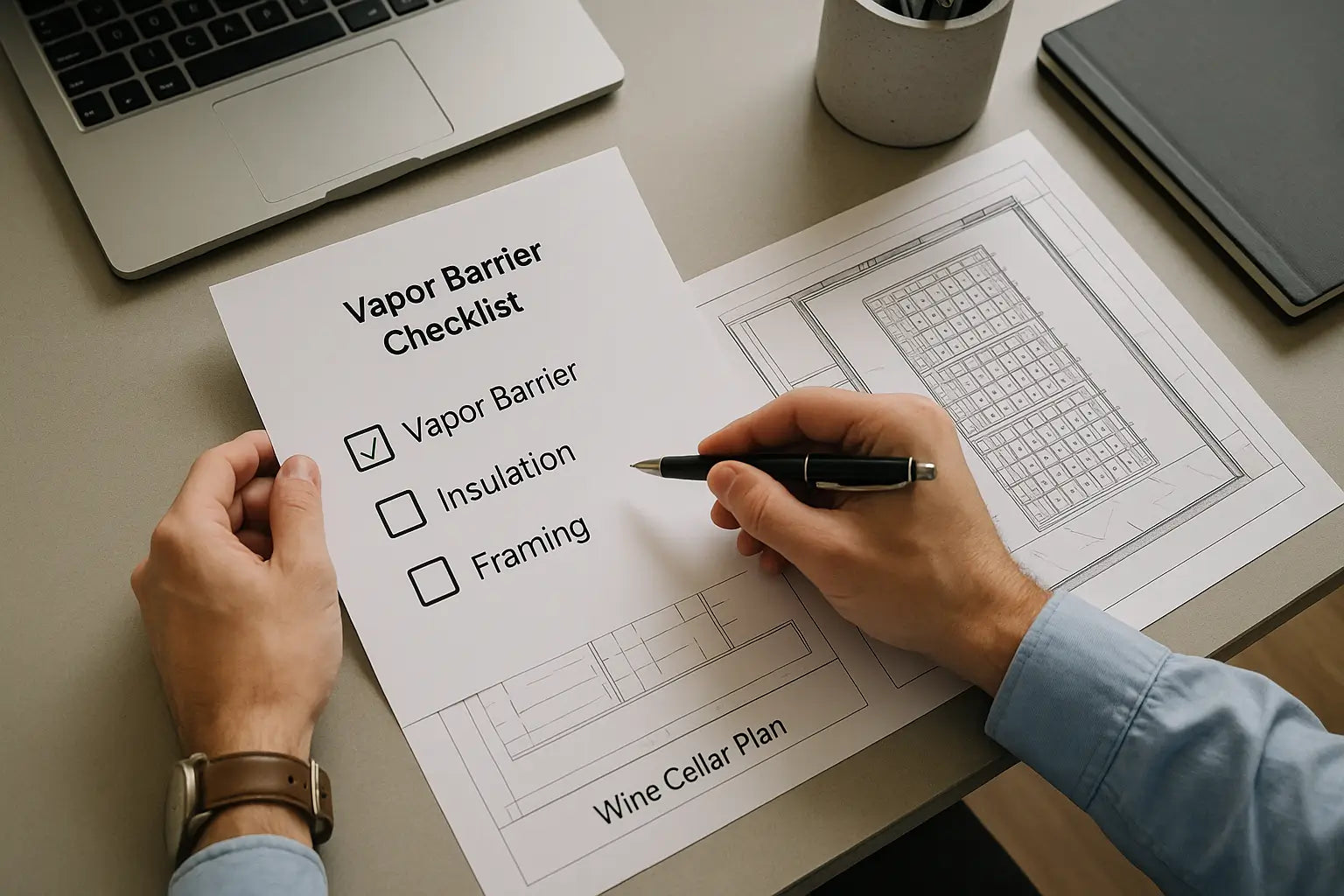
📩 Email your plans to support@wineguardiandealer.com — our product team will review them and advise on compatibility with Wine Guardian systems.
📞 You can also call us at 1 (800) 949-9904 to speak with a product specialist.
As an authorized Wine Guardian Dealer, we’ll help you avoid climate control issues from day one — just expert product guidance.
On the warm side of the insulation — not inside the cellar wall.
No. Insulation resists temperature — not vapor migration.
You risk mold, damaged insulation, cooling inefficiency, and ruined wine labels.
Yes — unless your cellar is naturally cool and dry year-round (very rare), a vapor barrier is essential.
🛒Shop our most-loved Wine Guardian cooling systems today.
🛠️Protect your wine with the most trusted systems on the market.
❤️Tested, reviewed, and loved by serious collectors like you.